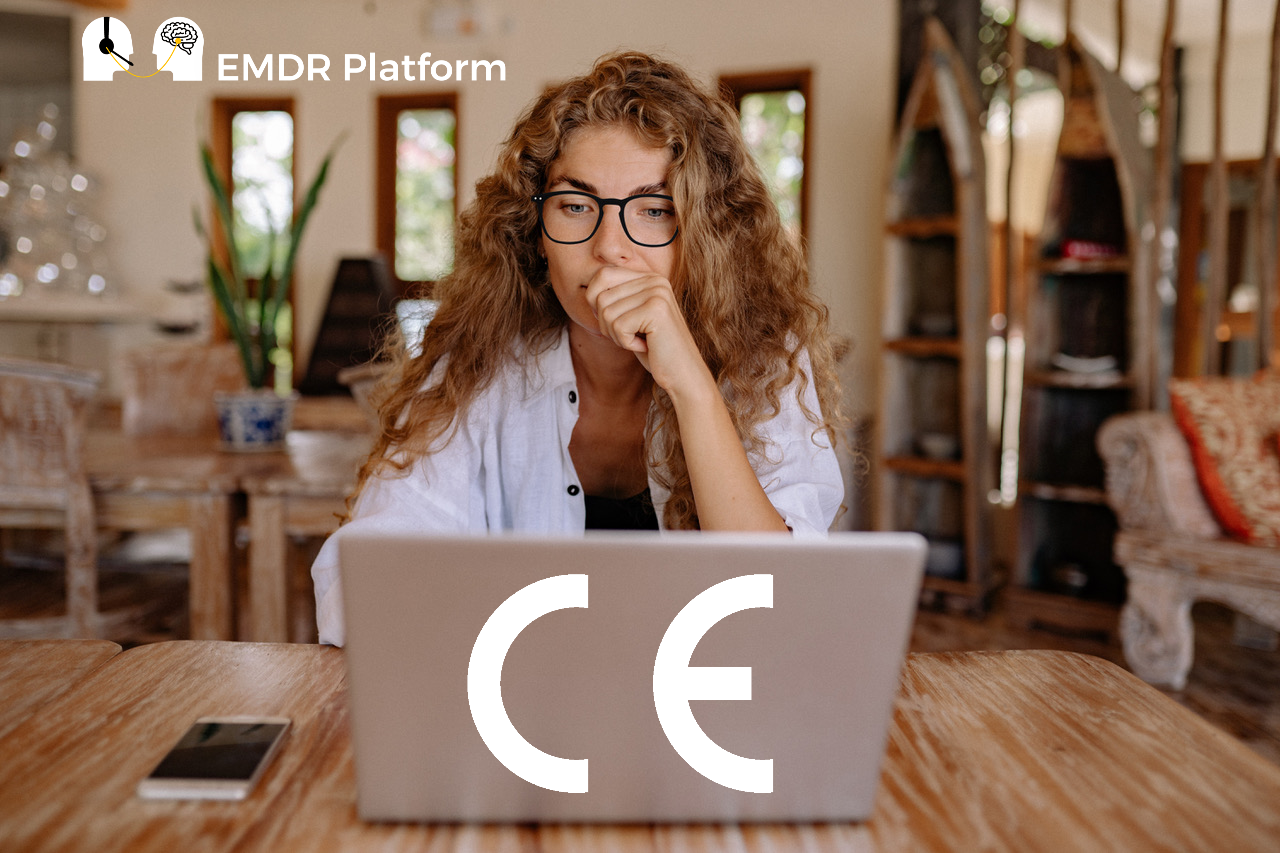Medical software without CE logo? Don't use it anymore!

You may think it's a silly question, but where would you rather treat your clients: in a neat practice where your clients feel comfortable or in an old barn that is about to collapse? A silly question indeed, but more or less the same when it comes to online session and the software you use to do so. It is not for nothing that the new medical device regulations (MDR) came into force in May 2021, yet healthcare professionals continue to use unreliable software. While in the meantime there are plenty of CE marked alternatives available.
The regulation of medical software
The MDR was introduced to reduce the risk for clients due to unreliable medical devices. However, there is still considerable use of free or cheap medical software packages that are not CE marked. A CE mark can quickly generate a lot of cost for the manufacturer, so there are still many suppliers of unmarked software. Many manufacturers postpone this major expense, but in the event of an audit they can expect a fine and must immediately take their device off the market.
What does the MDR and the use of unmarked software mean for you as a healthcare professional? Of course the software that you may use on a daily basis is suddenly no longer available because it has been taken off the market. However, the responsibility for following the MDR certainly does not lie solely with the manufacturer! In this article we will discuss your obligations as a healthcare professional when using medical software.
What is medical software according to the MDR?
The MDR defines medical software as a set of instructions that processes input and thereby provides output that is used for session or diagnosis of an individual client. Because of this broad definition as of May 2021, a lot of medical software are also covered by the MDR. For example, if you buy an Excel sheet with formulas to calculate and visualize the course of the SUD and VoC values of your client, this is already considered medical software by the MDR. After all, there may be an error in the formula which can lead you to draw the wrong conclusions about the course of session. The same applies to the commands you give to a software program; unreliable software could cause your client to see something completely different from what you intended and might see on your own screen. For example, in an EMDR session you might click on the function that makes the ball move faster, but due to an error in the formula the ball might move slower or stop moving.
Does the MDR distinguish between large hospitals and small medical practices?
No, the rules are the same for all healthcare providers. The Dutch Federation of University Medical Centres (NFU), which monitors the MDR requirements centrally, organised a webinar specifically for medical software which can be viewed here. Whereas the challenge for large UMCs lies mainly with self-developed software, small medical practices often commit errors by using free or cheap unmarked software. After all, there are so many software tools available online, and because of coronagraphs, a lot of work is still done online. The introduction of the MDR has also been postponed by a year for this reason from May 2020 to May 2021, but now this regulation really applies to all manufacturers and healthcare providers. So make sure you only buy CE marked software, even if it is often a bit more expensive.
What is the risk if I continue to use non CE marked software?
Hopefully you realise that this is not just the manufacturer's problem. The consequences of the MDR for healthcare institutions are explained on the website of the Government. The Healthcare and Youth Inspectorate (HYI) supervises the correct application of MDR and safe eHealth products. The manufacturer is responsible for CE marking of the medical software, but you as a healthcare provider are responsible for ensuring that you only treat your patients with CE marked software. This brings us back to the strange question we started with: you are ultimately the one who chooses whether you treat your clients in an old dilapidated barn or in a decent practice. There are plenty of CE marked alternatives to medical software, make use of them.